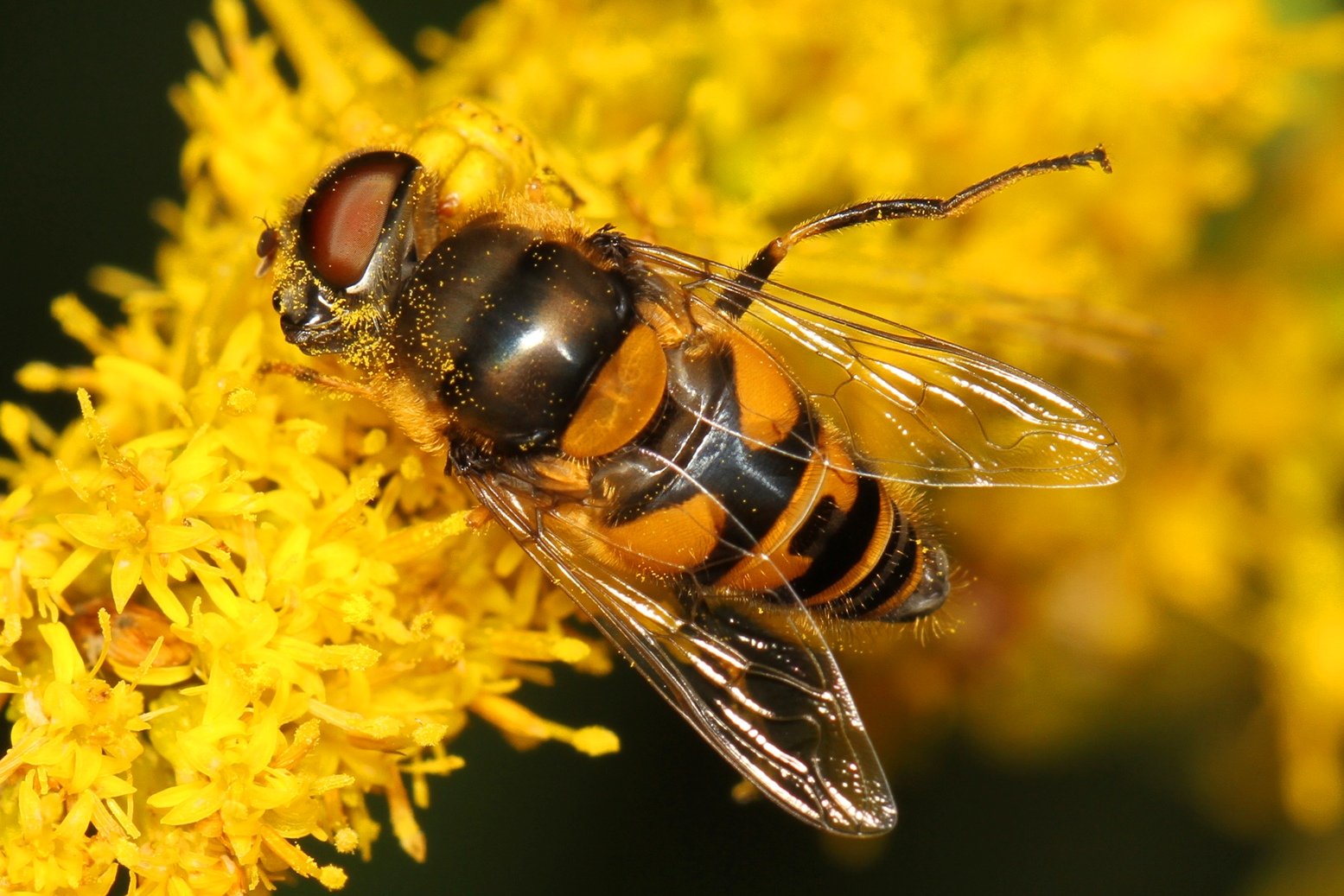Photo: Wavy Mucksucker, Judy Gallagher
Judy Gallagher is an ASNV board member and a regular surveyor of local wildlife who also captures photos of what she sees, in particular the less common species.
One of my previous columns dealt with wasp mimics, which included several Flower Fly species. Flower Flies are members of the Syrphidae fly family. They are also called Hover Flies as they can hover motionless for long periods of time. But Flower Fly describes them most aptly. Flower Flies love flowers.
Flower Fly larva, Judy Gallagher
Flower Flies undergo complete metamorphosis, starting as an egg which the adult female lays close to soft-bodied insects that the larvae can then use as prey. The larvae are blind and legless, so find their prey by moving their head back and forth. Flower Fly larvae easily can be mistaken for caterpillars. Most are an important biological control of nuisance insects, especially aphids, but they also can eat small caterpillars. In cool weather, they are the most effective insect control against aphids. There are a few species that are parasites, feed on plants, scavenge debris, or feed on fungal spores. Predatory larvae have pointed mouthparts that they use to pierce or tear their prey, then suck out the contents, but plant-feeding larvae have mandibles suitable for tearing vegetation.
Flower Fly pupa amongst the aphids on which it preyed when it was a larva, Judy Gallagher
After 3 molts of their exoskeletons, the larvae transform to pupae and they pupate either in leaf litter or on plants. Adults, which are more common in spring and fall in cool weather, feed on nectar, pollen and insect honeydew, the sweet waste excreted by some insects.
Flower Fly eggs being eaten by stink bug nymphs, Judy Gallagher
Flower Flies are vulnerable to predation at all life stages, and Flower Fly larvae will even eat each other. Predatory Stink Bugs and other insects prey on eggs, and larvae are attacked by ants, spiders and other predatory insects.
Transverse Flower Fly and Crab Spider, Judy Gallagher
Adults have lots of predators, including spiders, robber flies and other insects. Here (above) a very well-camouflaged Crab Spider has captured a Transverse Flower Fly.
Adults are pollinators, and under controlled conditions they can increase the pollination rate of crops such as onions, sweet peppers, pears, almonds and strawberries. They can travel up to a quarter of a mile to collect pollen. Many Flower Flies resemble bees, and some even have specialized pollen hairs like bees, but they eat the pollen off their legs rather than bringing it home for a brood. Flower Flies are fast fliers, reaching speeds of up to 8 miles per hour, quite remarkable for their size. There are a few accounts of species that migrate, but this is hard to track because they are so small.
American Snout Fly, Judy Gallagher
One of my favorite Flower Flies is the American Snout Fly. Its conspicuous snout helps it extract nectar from flowers.
Eastern Hornet Fly, Judy Gallagher
Several species have intricate eyes, including the Eastern Hornet Fly (above). It looks similar to our Yellowjacket Wasps. It puts its black front legs above its head to mimic wasp antennae, and when it is threatened, it bends its abdomen to look like a wasp that is stinging prey. It also makes a buzzing sound that is similar to that of some wasps.
Wavy Mucksucker , Judy Gallagher
But the local Flower Fly with the best eyes is the Wavy Mucksucker. It's only about 1/4 inch long, but it's a beauty.
There are over a hundred Flower Fly species found in our area. We have only seen 30 of them on our Wildlife Surveys. We have our work cut out for us!
View more of Judy’s Observations from Meadowood articles here.







